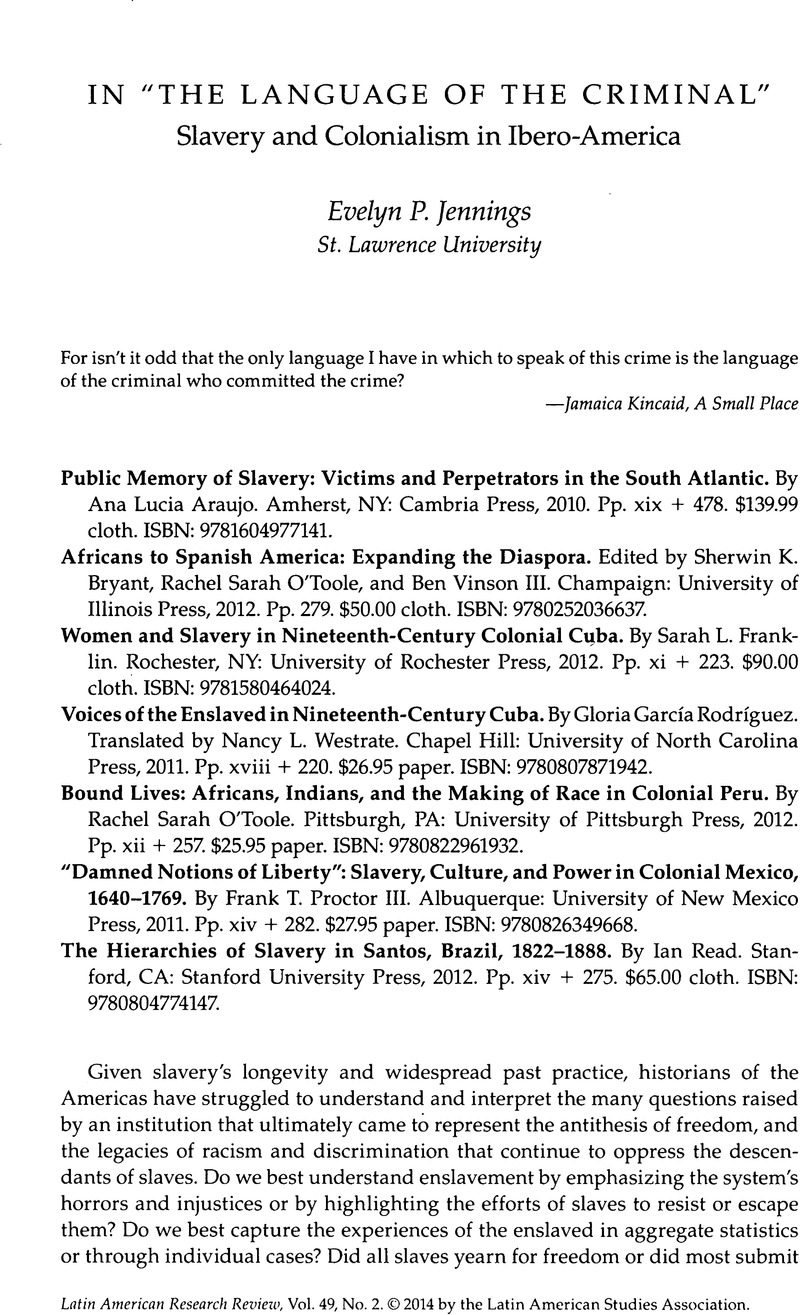No CrossRef data available.
Article contents
In “the Language of the Criminal”: Slavery and Colonialism in Ibero-America
Review products
Published online by Cambridge University Press: 05 September 2022
Abstract

- Type
- Review Essays
- Information
- Copyright
- Copyright © 2014 by the Latin American Studies Association
References
1. Philip D. Curtin, The Atlantic Slave Trade: A Census (Madison: University of Wisconsin Press, 1969); David Brion Davis, The Problem of Slavery in Western Culture (Ithaca, NY: Cornell University Press, 1966); Robert William Fogel and Stanley L. Engerman, Time on the Cross: The Economics of American Negro Slavery (Boston: Little, Brown, 1974); Eugene D. Genovese, Roll, Jordan, Roll: The World the Slaves Made (1974; New York: Vintage Books, 1976). Gilberto Freyre, Casa-grande e senzala (Rio de Janeiro: J. Olympio, 1943); Manuel Moreno Fraginals, El ingenio (1978; Barcelona: Crítica, 2001).
2. Kátia de Queirós Mattoso, To Be a Slave in Brazil, 1550–1888, trans. Arthur Goldhammer (New Brunswick: Rutgers University Press, 1986), 81.
3. Verena Martínez-Alier, Marriage, Class, and Colour in Nineteenth-Century Cuba: A Study of Racial Attitudes and Sexual Values in a Slave Society, 2nd ed. (Ann Arbor: University of Michigan Press, 1989).
4. Frank Tannenbaum, in Slave and Citizen: The Negro in the Americas (New York: Random House, Vintage Books, 1946), argued that Iberian law and Catholicism recognized and sometime even protected the humanity of slaves, providing more avenues to family life and freedom, than other empires in the Americas. He concluded that Iberians' recognition of slaves' humanity created less oppressive race relations in Latin America than in other American regions after emancipation.
5. Proctor's essay in Africans to Spanish America is a shorter version of chapter 2 in “Damned Notions of Liberty.”
6. Peter Blanchard, “The Language of Liberation: Slave Voices in the Wars of Independence,” Hispanic American Historical Review 82, no. 3 (2002): 499–523.
7. This book was originally published in Spanish as La esclavitud desde la esclavitud: La visión de los siervos (Mexico City: Centro de Investigación Científica Ing. Jorge L. Tamayo, 1996).




